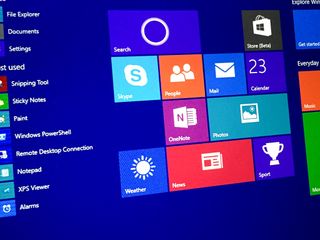The free year-long Windows 10 upgrade won't be offered to Enterprise users

While Microsoft will offer consumers who own a Windows 7 or 8.1 PC a free upgrade to Windows 10 for a year after it officially launches, the company won't extend that same offer for Windows 7 and 8.1 Enterprise users.
In a blog post on Friday, Microsoft stated:
"For enterprise customers and partners, we will continue to deliver exclusive value and offer extensive flexibility in how Windows 10 is deployed and managed as Windows evolves to become a service. For companies that require these enterprise-grade capabilities, Windows Software Assurance (SA) will continue to offer the best and most comprehensive benefits. Windows 7 Enterprise and Windows 8/8.1 Enterprise are not included in the terms of free Windows 10 Upgrade offer we announced last week, given active Software Assurance customers will continue to have rights to upgrade to Windows 10 enterprise offerings outside of this offer – while also benefiting from the full flexibility to deploy Windows 10 using their existing management infrastructure."
Microsoft plans to release feature updates for Windows 10 at a much faster pace compared to previous versions of the OS. However, some businesses want to simply get security updates and bug fixes. Microsoft stated:
"To support Windows 10 devices in these mission critical customer environments we will provide Long Term Servicing branches at the appropriate time intervals. On these branches, customer devices will receive the level of enterprise support expected for the mission critical systems, keeping systems more secure with the latest security and critical updates, while minimizing change by not delivering new features for the duration of mainstream (five years) and extended support (five years). "
Other business users of Windows 10 would still like to update their devices to use new features in the OS but they also want them to be tested beforehand. Microsoft stated:
"To that end, we are introducing a new approach for business customers, which we are referring to as the Current branch for Business. By putting devices on the Current branch for Business, enterprises will be able to receive feature updates after their quality and application compatibility has been assessed in the consumer market, while continuing to receive security updates on a regular basis. This gives IT departments' time to start validating updates in their environments the day changes are shipped broadly to consumers, or in some cases earlier, if they have users enrolled in the Windows Insider Program."
Source: Microsoft
Get the Windows Central Newsletter
All the latest news, reviews, and guides for Windows and Xbox diehards.

